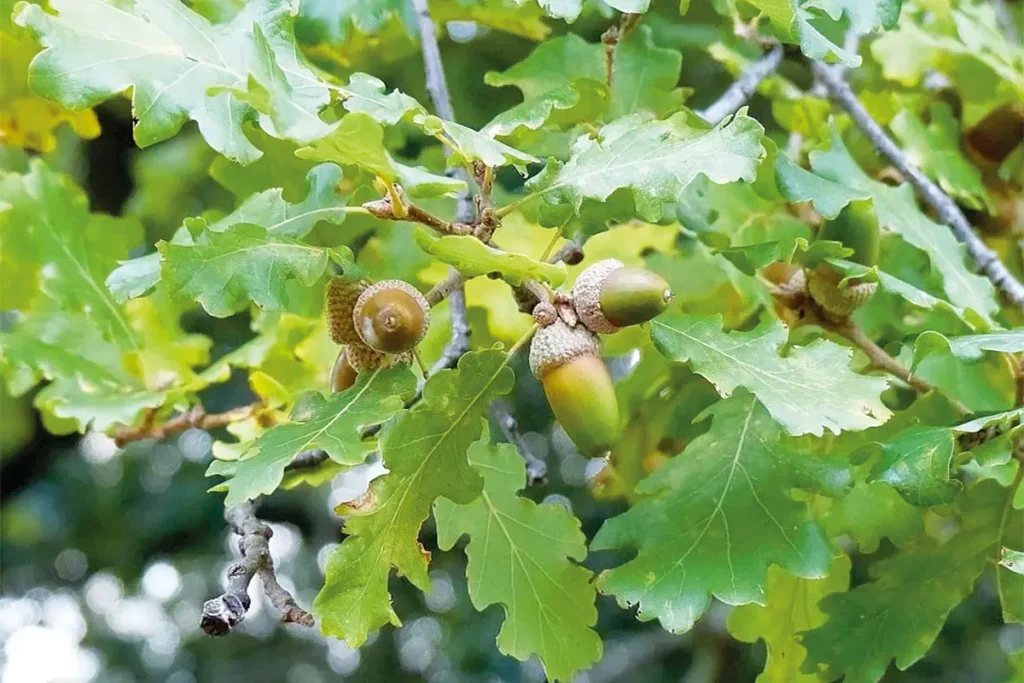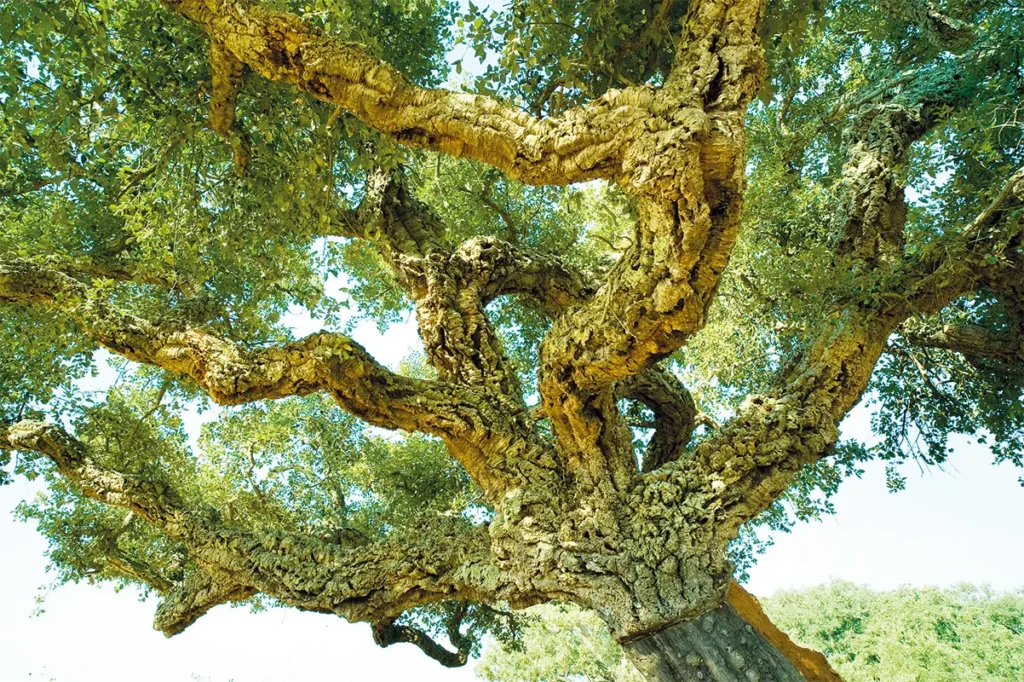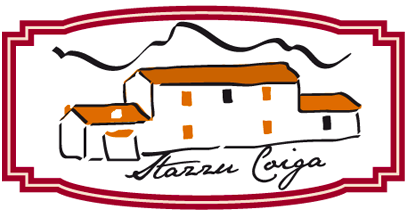


Nome Italiano: Sughera
Nome scientifico: Quercus suber L.
Nome Gallurese: Suara
Descrizione:
La quercia da sughero è un albero alto fino a 15-20 m, con chioma globosa, rada e piuttosto irregolare. Negli alberi isolati la chioma è espansa, tondeggiante e più compatta. Il tronco è dritto, talvolta sinuoso, con rami tortuosi e ramuli pelosi. La corteccia è spessa, fessurata, suberosa e, una volta asportata, si evidenzia la tipica colorazione bruno-rossastra del legno. Le foglie spicciolate e lunghe 3-7 cm, sono persistenti, coriacee, semplici, ovate o lanceolate-ovate, mucronate, con margine fogliare spesso revoluto. La pagina superiore ha colorazione verde scuro, quella inferiore tormentosa e verde più chiaro. Pianta monoica con fiori unisessuali, i maschili piccoli in amenti lassi color verde-giallastro, i femminili riuniti in spighe erette singoli o in piccoli gruppi.
Proprietà e usi:
La sughera è l’unica specie della quercia che produce una corteccia spessa di struttura uniforme che ricresce man mano che muore il tessuto tegumentale. La corteccia, chiamata sughero, è un tessuto che attraverso il fellogeno si rinnova ogni anno, differenziandosi da quello precedente, che strato dopo strato riveste di sughero il tronco e i rami.
Tra le proprietà del sughero, che ne fanno un materiale ecologico, è il fatto di essere un isolante acustico e termico naturale, impermeabile, immarciscente e riciclabile. Il sughero è una tra le risorse più stupefacenti e perfette che la natura ci offre: è l’isolante acustico e termico per eccellenza, oltre ad essere un materiale naturale, rinnovabile e riciclabile al 100%.
Curiosità e miti:
L’utilizzo più conosciuto del sughero è certamente quello dei tappi per uso enologico per la sua estrema elasticità e impermeabilità ai liquidi e ai gas, che garantiscono di chiudere ermeticamente bottiglie e botti. È apprezzato nei vini di qualità anche perché inodore, insapore, imputrescibile, non tossico. Alcuni studi scientifici avrebbero dimostrato che un singolo tappo di sughero è in grado di trattenere 8 gr di CO2, pari al doppio del suo peso. Quindici miliardi di bottiglie chiuse con questo materiale trattengono 118.500 tonn. di anidride carbonica, pari all’inquinamento prodotto da 45 mila veicoli in un anno. Ma l’impiego del sughero non finisce qui. Si contano oltre 500 prodotti realizzati con questo materiale, che vanno dai pannelli isolanti a elementi architettonici impiegati nella bioedilizia, ai pavimenti e ai fogli da parati, fino alla componentistica e all’arredamento e agli oggetti di design e alta moda per finire al settore automobilistico e aerospaziale.

Italian name: Sughera
Scientific name: Quercus suber L.
Gallurese name: Suara
Description:
The cork oak is a tree up to 15-20 m tall, with a globular, sparse and rather irregular crown. In isolated trees, the crown is expanded, rounded and more compact. The trunk is straight, sometimes sinuous, with twisted branches and hairy ramuli. The bark is thick, fissured, suberose and, when removed, shows the typical reddish-brown colouring of the wood. The 3-7 cm long, wedge-shaped leaves are persistent, leathery, simple, ovate or lanceolate-ovate, mucronate, with an often revolute leaf margin. The upper side is dark green, the lower side tormentous and lighter green. Monoecious plant with unisexual flowers, the male flowers small in yellowish-green, lxose catkins, the female flowers in erect single spikes or in small groups.
Properties and uses:
Cork is the only species of oak tree that produces a thick bark of uniform structure that grows back as the tegumental tissue dies. The bark, called cork, is a tissue that through phellogen is renewed every year, differentiating itself from the previous one, which layer after layer covers the trunk and branches with cork. Among the properties of cork, which make it an environmentally friendly material, is the fact that it is a natural acoustic and thermal insulator, waterproof, immiscible and recyclable. Cork is one of the most amazing and perfect resources that nature offers us: it is the acoustic and thermal insulator par excellence, as well as being a natural, renewable and 100% recyclable material.
Curiosities and myths:
The best-known use of cork is certainly in corks for oenological use because of its extreme elasticity and impermeability to liquids and gases, which ensure that bottles and barrels are hermetically sealed. It is also appreciated in quality wines because it is odourless, tasteless, rot-proof and non-toxic. Scientific studies have reportedly shown that a single cork can retain 8 g of CO2, twice its weight. Fifteen billion bottles closed with this material retain 118,500 tonnes of carbon dioxide, equal to the pollution produced by 45 thousand vehicles in one year. But the use of cork does not end there. There are more than 500 products made from this material, ranging from insulation panels to architectural elements used in green building, flooring and wallpapering, to components and furniture and designer and high-fashion objects, ending with the automotive and aerospace sectors.
